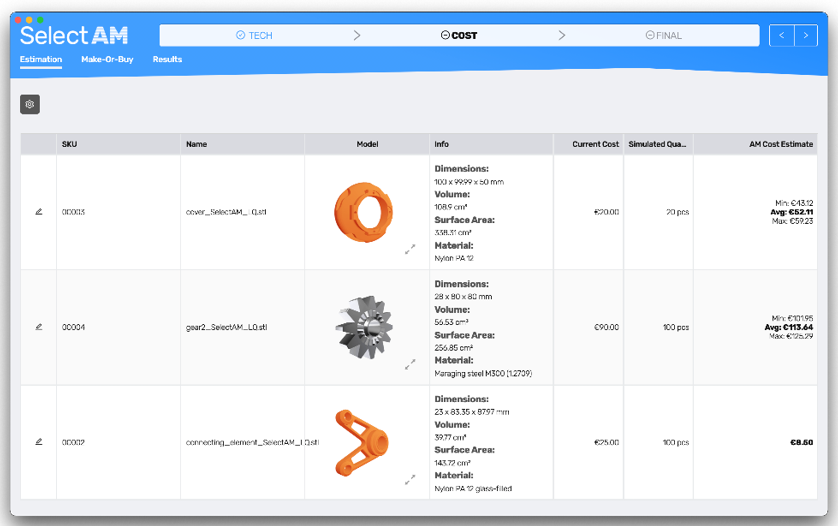The technology startup SelectAM has announced new software for the automated part identification of components that have been produced with a 3D printer.
The automated parts control software can be integrated into existing PDM, PIM and ERP systems and is intended to help manufacturers exploit the full potential of additive manufacturing. SelectAM’s start-up partners include software and manufacturing companies in Europe who want to expand their production capacities for 3D printing.
Wall thickness analysis and nesting of parts in the automated part identification software from SelectAM. Image via SelectAM.
Encouragement to move from conventional manufacturing to AM
SelectAM was founded in 2020 by an international team of additive manufacturing experts and software developers. The startup began as a spin-off of a research project from Aalto University in Finland that created a 3D printing database that could help manufacturers identify the potential time and cost savings of additive manufacturing and ultimately encourage more companies to switch to 3D printing in favor of traditional methods.
As conventional manufacturing companies increasingly face the challenge of rethinking the way in which they manufacture their products, 3D printing could benefit these companies as they transition to a more digital manufacturing approach. Senvol is the largest additive manufacturing database in the industry and is used by multiple sectors to support process integration.
Other similar platforms include the Interactive RAPID AM Portal (iRAMP) from the American manufacturing association SME, which helps companies identify whether 3D printing can improve their operations, and a feasibility model developed by researchers at Tampere University of Technology and industrial engineering company Enmac Oy was developed.

Automated parts control
SelectAM’s automated part identification and redesign software was developed to provide specific tools for manufacturers looking to scale their 3D printing operations to efficiently facilitate this transformation. In short, the platform allows companies to review and identify how they can streamline production by implementing 3D printing processes and expand their activities in this area.
The parts labeling function takes into account the technical, economic and design potential of the customers’ components and their supply chains. At the same time, the platform offers a simulation of the industrially relevant additive manufacturing technologies and post-processing steps that could be suitable.
In addition, the software offers an up-to-date database with 3D printer materials for end use and their manufacturing options. Supported by machine learning, the software offers a cost and price simulation with or without 3D models as well as nested visualizations to support customers in decision-making and production optimization.
The platform is also equipped with full offline functionality and customers have the option to install on-site to comply with strict data export regulations. SelectAM can determine the total cost of a customer switching to 3D printing through a comprehensive make-or-buy analysis that offers both part inventories and part-to-part comparisons.
So far SelectAM has analyzed around 16,000 component types in cooperation with its start-up partners across Europe. The company is now continuing to run its automated part identification software for 3D printers to drive additive manufacturing adoption across a variety of industries.
Subscribe to the 3D printing industry newsletter for the latest news on additive manufacturing. You can also stay connected by following us on Twitter and liking us on Facebook.
Looking for a career in additive manufacturing? Visit 3D Print Jobs for a selection of roles in the industry.
The picture shown shows the wall thickness analysis and the nesting of parts in SelectAM’s automated part identification software. Image via SelectAM.










